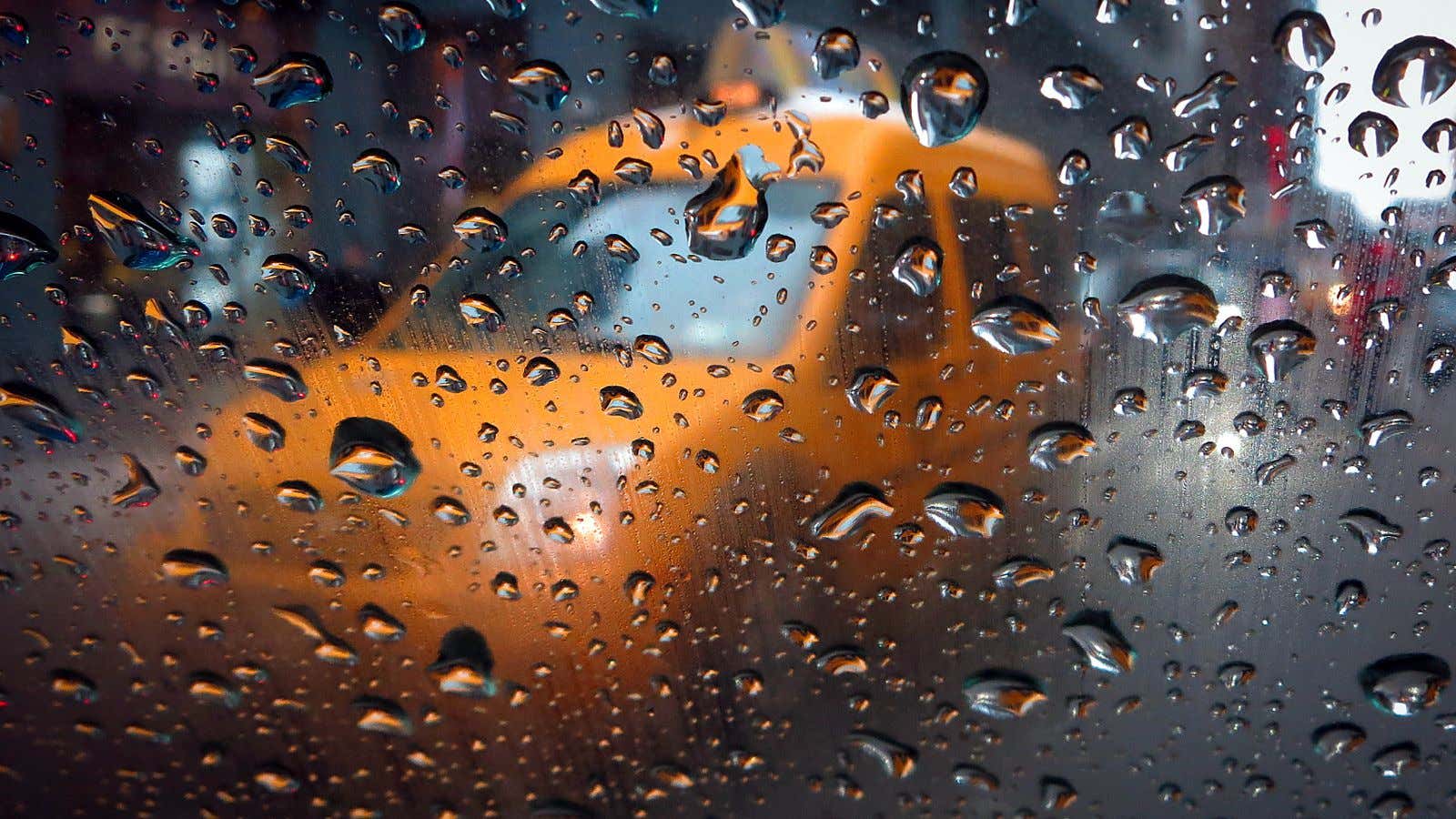This new research will be music to Uber CEO Travis Kalanick’s ears: It turns out that taxi drivers are exactly the income-maximizing, labor-optimizing robots that neoclassical economics expects them to be.
Princeton University economist Henry Farber has examined a new set of public data about New York City taxi cabs to answer the age-old question of why you can’t find a cab in the rain. There’s one simple answer—more people take cabs when it’s too wet to walk—that leads to bigger implications. For instance, some behavioral economists argue that cab drivers structure their day to earn a certain amount of money, and then stop working. That could mean a vicious cycle—the more demand there is for cabs when it rains, the faster the supply depletes.
But Farber has access to new data released by the city of New York that tracks earnings specifically enough to analyze across a multi-year period and according to the weather. He used it to calculate how responsive drivers are to higher wages, and discovered that they don’t appear to be working toward a set goal each day; instead, they optimize their time spent working by driving more when wages are high, and less when they are low. And he also found that drivers don’t typically earn more when it rains—enough cabs simply want to avoid the bad weather that the surge in demand is unmet.
This means that increasing fares when it rains, snows, or there are simply lots of people who want ride a cab should result in more cabs for riders—exactly the strategy of Uber’s “surge pricing.” Per Farber, an increase of about 14.2% should do the trick, if Uber’s drivers behave like New York cabbies, though a larger increase might work somewhat faster. Of course that raises the question of why Uber’s surge price fares can be 100%, 250% or even 650% higher than their regular fee.
Uber’s surge pricing has been one of the least popular features of the business, which is strange: Uber is a luxury product, after all, and dynamic pricing is a common feature of similar services with fixed short-term supply and fluctuating demand—airlines, railways, and hotels, for example. It’s almost a shame that surge pricing has attracted such ire, because real-time prices are one of the few proper innovations that Uber’s platform can generate, and if done right it can actually help riders who are willing to pay a bit more get a car sooner, and help drivers make a bit of extra cash.
But pressure on the company—it is dogged by accusations that its dynamic pricing can bleed into straight greed—has seen Uber strike deals to limit surge pricing during emergencies. And if Farber is right that a relatively small fare increase would be enough to solve the rain demand problem, the company will face more questions about how it sets it surge prices. To make that system work, Uber will need to be more transparent about how surge pricing is applied.
Uber is just a glorified market, and if we know anything, it’s that markets depend on trust—and that can be hard to earn when spikes in prices are a feature, not a bug.
